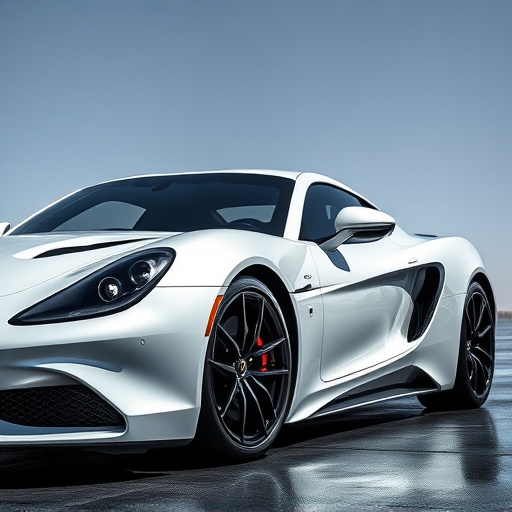A comparison of air intake filter sizes reveals that larger filters allow more airflow, enhancing engine performance, while smaller filters create restriction, hindering efficiency. Finding the right balance is crucial for optimal engine performance and fuel burning efficiency. An informed selection of the appropriate air intake filter size based on vehicle needs and driving conditions ensures peak engine performance and responsiveness in both automotive and industrial applications.
In any system, the relationship between restriction and flow is pivotal. Understanding this dynamic is key to optimizing performance across diverse applications, from automotive engines to industrial processes. This article delves into the fundamentals of these concepts, using air intake filters as a practical example. We explore how varying filter sizes impact airflow, highlighting the delicate balance required for optimal performance. By examining real-world scenarios, we provide insights that can enhance efficiency through strategic restriction management in various contexts, especially in comparisons of air intake filter sizes.
- Understanding Restriction and Flow: The Basic Dynamics
- Air Intake Filter Sizes: A Practical Example of Restriction vs Flow
- Balancing Act: Optimizing Restriction for Desired Flow in Various Applications
Understanding Restriction and Flow: The Basic Dynamics

In the context of automotive performance, understanding the interplay between restriction and flow is key. Restriction refers to any obstacle or reduction in the path of air entering a vehicle’s engine. This could come from various sources, including components like air intake filters, which, despite their purpose of trapping contaminants, also limit airflow. On the other hand, flow represents the seamless movement of air into the engine, optimizing power and efficiency. Comparing different air intake filter sizes highlights this dynamic; larger filters allow more air to pass through, promoting free-flowing air intake, while smaller filters create more restriction, potentially impacting engine performance.
The basic dynamics at play involve a delicate balance. Excessive restriction can choke the engine, hindering its ability to breathe and perform optimally. Conversely, minimal restriction ensures a steady flow of cool, clean air, enabling the engine to burn fuel efficiently. In the realm of air intake filters, selecting the right size based on factors like vehicle specifications and driving conditions is crucial for achieving that sweet spot—a harmonious balance between restriction and flow.
Air Intake Filter Sizes: A Practical Example of Restriction vs Flow

Air intake filters come in various sizes, each with its own effect on airflow and performance. This presents an intriguing example to understand the relationship between restriction and flow. When considering different air intake filter sizes, we can observe a trade-off between restricting airflow and maintaining optimal flow. Smaller air intake filters create more restrictions, limiting the amount of air that enters the engine. This can negatively impact engine performance, especially during high-revving conditions or under heavy acceleration.
On the other hand, larger air intake filters allow for greater airflow, providing a smoother and more consistent supply of air to the engine. While this enhances flow, it may introduce some delays in air delivery, potentially affecting the engine’s responsiveness. Therefore, the choice of air intake filter size depends on finding the right balance between these two factors to achieve peak engine performance and efficiency. An informed comparison of air intake filter sizes can help car enthusiasts and mechanics make practical decisions tailored to their specific driving needs and preferences.
Balancing Act: Optimizing Restriction for Desired Flow in Various Applications

In various applications, from automotive engines to industrial processes, achieving the right balance between restriction and flow is a delicate art. This balancing act involves optimizing air intake filter sizes and designs to ensure efficient airflow while maintaining the desired level of restriction. The goal is to strike a harmonious chord where restrictions control and regulate flow without stifling it, allowing systems to operate at their peak performance.
In the context of air intake filters, comparing different sizes and types reveals how subtle adjustments can significantly impact overall system dynamics. Smaller filters may offer higher restrictions for improved efficiency but could lead to reduced airflow, while larger ones provide smoother, more substantial flow but might introduce unnecessary backpressure. Therefore, selecting the optimal filter size depends on understanding the application’s specific needs, considering factors like air velocity, pressure drop, and the desired level of filtration.
In understanding the relationship between restriction and flow, particularly through practical examples like air intake filter sizes, it’s clear that optimizing these dynamics is key. By balancing restriction for desired flow in various applications, we can enhance performance across different systems. This knowledge allows engineers and designers to make informed decisions when selecting or specifying air intake filters, ultimately improving overall efficiency and effectiveness. When it comes to comparing air intake filter sizes, this balance becomes a critical factor in achieving optimal system performance.














